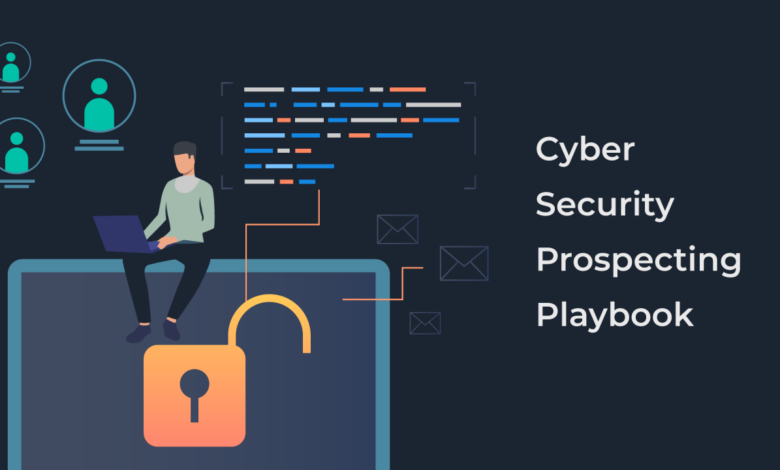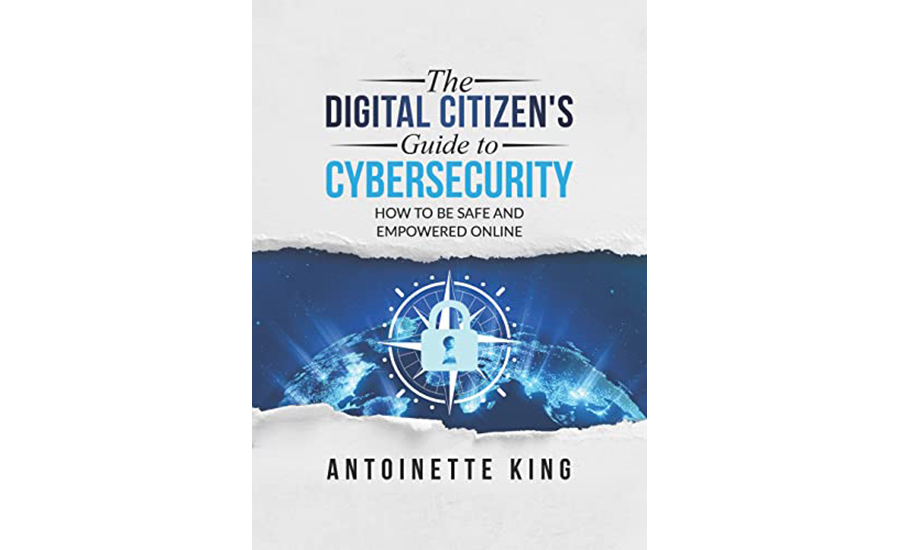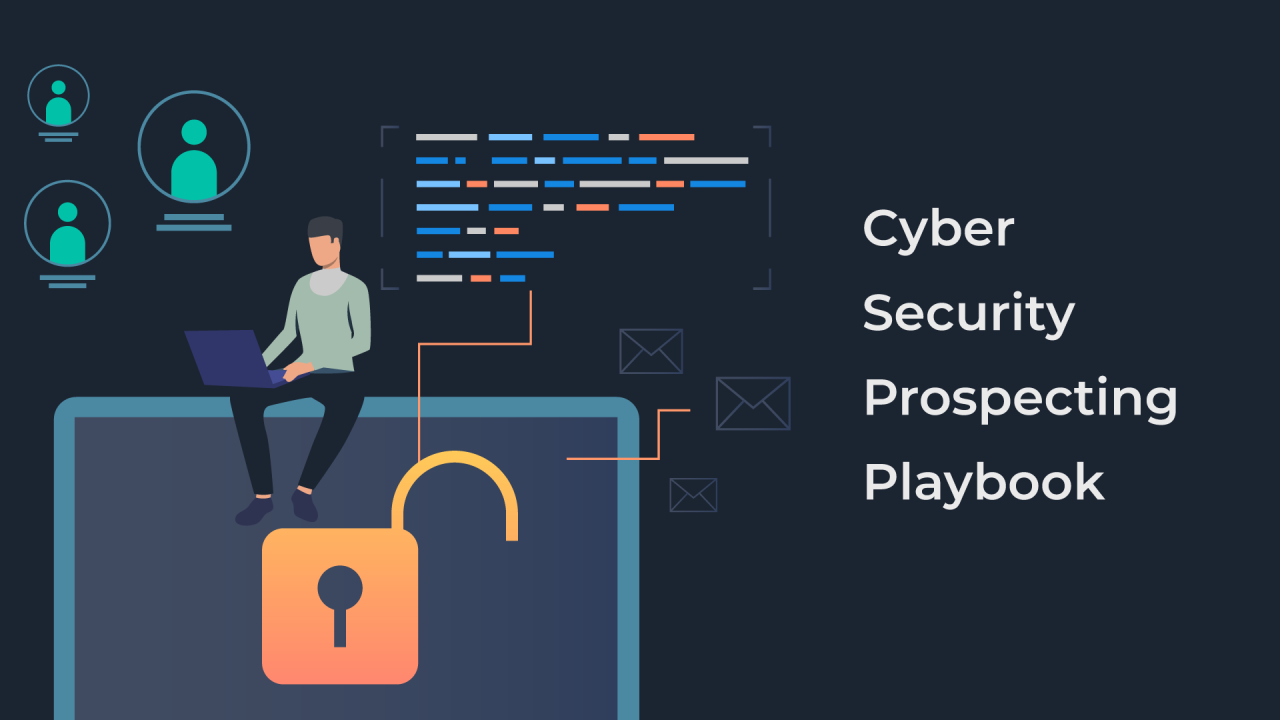
The EU New Cybersecurity Playbook A Deep Dive
The EU New Cybersecurity Playbook is shaking things up in the digital world! This comprehensive strategy tackles some seriously complex cybersecurity challenges facing the European Union, from protecting critical infrastructure to safeguarding citizens’ data. It’s not just another policy document; it’s a roadmap for a safer, more secure digital future, setting new standards for businesses and governments alike.
Get ready to explore the key components, the impact on businesses, and the innovative technological solutions driving this crucial initiative.
We’ll unpack the playbook’s objectives, examine the threats it addresses, and delve into the practical implications for businesses and organizations operating within the EU. We’ll also explore the international collaborations and technological advancements that are key to its success, as well as looking at potential future challenges and adaptations.
Overview of the EU New Cybersecurity Playbook
The EU’s new cybersecurity playbook represents a significant step-up in the bloc’s efforts to bolster its collective digital resilience. Facing an increasingly sophisticated and interconnected threat landscape, the playbook aims to provide a coordinated and comprehensive approach to cybersecurity across member states, fostering a stronger, more unified defense against cyberattacks. It moves beyond simply reacting to incidents and instead focuses on proactive prevention and robust response mechanisms.The playbook’s key objectives center around strengthening the EU’s overall cybersecurity posture.
This involves improving the preparedness of critical infrastructure, enhancing incident response capabilities, and promoting a culture of cybersecurity awareness among citizens and organizations alike. Ultimately, the goal is to create a more secure digital environment for all EU citizens and businesses, fostering trust and economic growth within the digital single market.
Main Components and Strategies
The EU’s cybersecurity playbook is not a single document, but rather a collection of strategies and initiatives working in concert. These components include improved information sharing mechanisms between member states and EU institutions, fostering collaboration on threat intelligence and incident response. The playbook also emphasizes the development and implementation of robust cybersecurity standards and certifications, ensuring a common baseline of security across different sectors.
Furthermore, it promotes investment in cybersecurity research and innovation, encouraging the development of new technologies and solutions to combat emerging threats. A crucial element is the focus on cybersecurity skills development and training, addressing the significant skills gap within the sector. Finally, the playbook advocates for a more proactive approach to cybersecurity, moving beyond reactive measures to a preventative model that anticipates and mitigates risks.
Context and Rationale
The creation of the playbook stems from a growing recognition of the increasing severity and frequency of cyberattacks targeting EU institutions, critical infrastructure, and businesses. High-profile incidents, such as ransomware attacks crippling essential services or data breaches exposing sensitive personal information, have highlighted the urgent need for a more coordinated and effective response. The increasing interconnectedness of digital systems across borders further underscores the importance of a collaborative approach.
The playbook provides a framework for this collaboration, addressing the challenges posed by a transnational threat landscape that requires joint efforts to effectively combat. The rationale behind the playbook is straightforward: to strengthen the EU’s collective defense against cyber threats, minimize damage from attacks, and build a more resilient digital ecosystem.
Timeline of Key Milestones and Planned Actions, The eu new cybersecurity playbook
The implementation of the EU cybersecurity playbook is an ongoing process, characterized by a series of phased actions. While a precise timeline with specific dates isn’t publicly available in a single, readily accessible document, the process involves several key milestones. Early stages focused on developing the playbook’s framework and gaining consensus among member states. Current efforts are concentrated on implementing the various components, such as improving information sharing platforms and harmonizing cybersecurity standards.
Future milestones will likely involve the evaluation of the playbook’s effectiveness and potential adjustments based on ongoing threat assessments and technological advancements. The process is iterative, adapting to the ever-evolving nature of the cybersecurity threat landscape. For example, the response to the ongoing war in Ukraine and the associated increase in cyberattacks has likely influenced the playbook’s priorities and implementation strategy.
Specific dates for milestones are subject to change and are best tracked through official EU publications and announcements.
Key Cybersecurity Challenges Addressed
The EU’s New Cybersecurity Playbook tackles a broad range of escalating threats, recognizing that the digital landscape presents increasingly sophisticated and interconnected risks. It moves beyond simply reacting to incidents to proactively building resilience across critical sectors. This proactive approach is a significant departure from previous strategies, focusing on prevention and collaboration rather than solely on reactive measures.The playbook directly addresses several key cybersecurity vulnerabilities impacting the EU’s digital infrastructure and economy.
These challenges are not isolated incidents but interconnected threats requiring a holistic and coordinated response. The playbook’s effectiveness hinges on its ability to foster collaboration between public and private sectors, creating a unified front against these growing threats.
Critical Infrastructure Protection
Protecting critical infrastructure – encompassing energy grids, transportation networks, healthcare systems, and financial institutions – is paramount. The playbook emphasizes the need for robust cybersecurity measures within these sectors, recognizing their interconnectedness and the cascading effects of a successful cyberattack. For example, a compromised energy grid could lead to widespread power outages, affecting numerous other sectors and causing significant economic disruption.
The playbook advocates for risk assessments, incident response plans, and regular security audits tailored to the specific vulnerabilities of each critical infrastructure component. This includes promoting the adoption of advanced security technologies and fostering information sharing between operators and national authorities.
Data Breaches and Data Protection
Data breaches remain a persistent and costly problem. The playbook underscores the need for enhanced data protection measures, emphasizing the importance of robust data governance frameworks, employee training, and incident response capabilities. The scale of a data breach can be devastating, leading to significant financial losses, reputational damage, and erosion of public trust. Consider the impact of a large-scale breach targeting a major financial institution, potentially exposing millions of customer records and leading to significant financial penalties and legal repercussions.
The playbook stresses the importance of compliance with regulations like the GDPR and the implementation of effective data security controls.
Supply Chain Vulnerabilities
The increasing reliance on global supply chains exposes businesses and critical infrastructure to vulnerabilities. Malicious actors can exploit weaknesses within the supply chain to gain access to sensitive systems or data. The playbook emphasizes the need for greater transparency and security throughout the supply chain, including rigorous vendor vetting, secure software development practices, and robust monitoring capabilities. A compromised component in a critical system, such as a faulty software module within a power grid control system, could have catastrophic consequences.
The playbook encourages collaboration between businesses and government agencies to identify and mitigate these risks.
Impact on the EU Economy and Society
The cumulative impact of these cybersecurity challenges is substantial. Data breaches lead to financial losses, diminished consumer confidence, and legal liabilities. Attacks on critical infrastructure can disrupt essential services, impacting public health, transportation, and economic activity. The cost of cybersecurity incidents, including remediation, legal fees, and reputational damage, is substantial, placing a significant burden on businesses and the public sector.
The playbook aims to mitigate these costs through proactive security measures and collaborative efforts. Furthermore, successful cyberattacks can erode public trust in digital services and institutions, hindering the development of a fully functioning digital single market. A robust cybersecurity posture is therefore essential for the continued economic prosperity and social well-being of the EU.
Comparison with Previous EU Cybersecurity Strategies
The New Cybersecurity Playbook represents a shift towards a more proactive and collaborative approach compared to previous EU cybersecurity strategies. While earlier strategies primarily focused on reactive measures and incident response, this playbook emphasizes prevention, resilience building, and information sharing. This proactive approach aims to address the root causes of vulnerabilities rather than simply reacting to attacks after they occur.
The increased focus on collaboration between public and private sectors is also a notable difference, recognizing the importance of a shared responsibility in securing the EU’s digital space. This collaborative model promotes a more holistic and effective approach to cybersecurity, leveraging the expertise and resources of both sectors to enhance overall resilience.
Implementation and Enforcement Mechanisms: The Eu New Cybersecurity Playbook
The EU’s New Cybersecurity Playbook isn’t just a set of recommendations; it’s a roadmap requiring robust implementation and enforcement mechanisms to ensure its effectiveness. This involves a multi-faceted approach, distributing responsibilities across governments, businesses, and citizens, and leveraging a range of tools and strategies. Success hinges on clear roles, effective monitoring, and appropriate sanctions for non-compliance.The playbook’s implementation relies on a collaborative effort.
Governments play a crucial role in establishing the legal framework, providing funding for cybersecurity initiatives, and fostering cooperation between public and private sectors. Businesses are responsible for implementing the necessary security measures within their organizations, investing in cybersecurity training for their employees, and reporting cybersecurity incidents. Citizens, in turn, have a role in maintaining good cybersecurity hygiene, being vigilant against phishing scams and malware, and reporting suspicious activities.
Roles and Responsibilities of Stakeholders
The success of the EU Cybersecurity Playbook hinges on a clear delineation of roles and responsibilities. Governments act as the regulatory body, setting standards and enforcing compliance. They also fund research and development in cybersecurity, support the development of national cybersecurity strategies, and facilitate information sharing between stakeholders. Businesses, as the primary targets of cyberattacks, are responsible for implementing the technical and organizational measures Artikeld in the playbook.
This includes risk assessments, incident response plans, and employee training programs. Citizens, as users of digital services, are responsible for practicing good cybersecurity hygiene, such as using strong passwords and being cautious of phishing attempts. Effective collaboration between these three groups is paramount for the playbook’s success.
Implementation Process
The implementation of the EU Cybersecurity Playbook is a phased process requiring coordinated action from various stakeholders. The following table Artikels the key phases, actions, responsible parties, and timelines:
| Phase | Action | Responsible Party | Timeline |
|---|---|---|---|
| Assessment & Planning | Conduct national cybersecurity risk assessments; Develop national cybersecurity strategies aligned with the playbook; Establish clear communication channels between stakeholders. | National Governments, Businesses | Year 1 |
| Implementation & Training | Implement cybersecurity measures in accordance with the playbook; Develop and deliver cybersecurity awareness training programs for businesses and citizens; Establish cybersecurity incident reporting mechanisms. | Businesses, National Governments, Cybersecurity Agencies | Years 2-3 |
| Monitoring & Evaluation | Monitor the effectiveness of implemented measures; Conduct regular cybersecurity audits; Evaluate the impact of the playbook on the cybersecurity landscape; Adapt strategies based on evaluation results. | National Governments, Cybersecurity Agencies, Independent Auditors | Ongoing |
| Enforcement & Sanctions | Enforce compliance with the playbook’s requirements; Impose sanctions on organizations that fail to meet the standards; Investigate and prosecute cybercriminals. | National Governments, Law Enforcement Agencies | Ongoing |
Best Practices and Successful Implementation Strategies
Several regions and organizations have demonstrated successful cybersecurity implementation strategies that offer valuable lessons for the EU. For example, Singapore’s Cybersecurity Agency (CSA) has implemented a robust national cybersecurity strategy that emphasizes collaboration between the public and private sectors, promoting a culture of cybersecurity awareness, and providing strong regulatory frameworks. Similarly, the NIST Cybersecurity Framework in the United States offers a flexible and adaptable approach to cybersecurity risk management that can be tailored to organizations of different sizes and sectors.
These examples highlight the importance of clear communication, strong leadership, and a collaborative approach in achieving effective cybersecurity outcomes. Learning from these successes will be crucial for the EU’s implementation of its playbook.
Impact on Businesses and Organizations

The EU’s new cybersecurity playbook significantly impacts businesses and organizations operating within the EU, introducing stricter regulations and heightened expectations for cybersecurity preparedness. This isn’t simply about compliance; it’s about fostering a more resilient and secure digital ecosystem across the bloc. The playbook’s implications extend far beyond large corporations, affecting SMEs and even smaller organizations, underscoring the pervasive nature of cybersecurity threats in today’s interconnected world.The playbook Artikels specific requirements and obligations for businesses, placing a greater emphasis on proactive risk management and incident response.
This means moving beyond a reactive approach to cybersecurity and embracing a more holistic, preventative strategy. The level of obligation will vary depending on the size and sector of the business, and the type of data processed, but the core principles remain consistent: protect your data, your systems, and your customers.
Specific Requirements and Obligations for Businesses
The playbook doesn’t prescribe a single, uniform cybersecurity solution. Instead, it establishes a framework based on risk assessment and proportionate measures. Businesses are expected to conduct regular risk assessments, identifying vulnerabilities and implementing appropriate security controls. This involves implementing robust security measures such as strong authentication, data encryption, regular software updates, and employee training programs. Failure to comply can lead to significant financial penalties and reputational damage.
Furthermore, the playbook emphasizes the importance of incident reporting and response, requiring businesses to have a clear plan in place to handle cybersecurity incidents effectively and report them to relevant authorities when necessary. This includes establishing clear communication channels with stakeholders and developing a robust incident response plan that addresses containment, eradication, recovery, and post-incident analysis.
Adapting Cybersecurity Strategies for Compliance
Adapting to the playbook requires a strategic approach. Businesses should begin by conducting a thorough assessment of their current cybersecurity posture. This involves identifying existing security controls, evaluating their effectiveness, and identifying gaps in their defenses. Based on this assessment, businesses can develop a roadmap for improvement, prioritizing the implementation of critical security controls. This might involve investing in new technologies, such as advanced threat detection systems or security information and event management (SIEM) tools, as well as enhancing existing processes, such as employee training programs or incident response plans.
For example, a small retail business might prioritize implementing strong password policies and employee phishing awareness training, while a large financial institution might focus on more sophisticated threat intelligence and incident response capabilities. Regular audits and penetration testing can also help businesses identify and address vulnerabilities before they can be exploited.
Recommendations for Improving Cybersecurity Posture
The playbook’s emphasis on proactive security necessitates a shift in mindset and investment. Here are some key recommendations for businesses to bolster their cybersecurity posture:
Implementing these recommendations is crucial not just for compliance, but for the long-term sustainability and success of any business operating in the EU. A strong cybersecurity posture protects not only sensitive data but also the reputation and financial stability of the organization.
- Conduct regular risk assessments to identify vulnerabilities and prioritize mitigation efforts.
- Implement strong authentication mechanisms, such as multi-factor authentication (MFA).
- Encrypt sensitive data both in transit and at rest.
- Maintain up-to-date software and security patches.
- Develop and regularly test an incident response plan.
- Provide comprehensive cybersecurity awareness training to employees.
- Establish clear communication channels for reporting security incidents.
- Invest in security information and event management (SIEM) tools for threat detection and analysis.
- Regularly review and update cybersecurity policies and procedures.
- Consider engaging external cybersecurity experts for assistance.
Cooperation and International Collaboration
The EU’s New Cybersecurity Playbook recognizes that cybersecurity threats transcend national borders, requiring a concerted global response. Effective international cooperation and information sharing are therefore central to its success, fostering a collaborative environment to combat these increasingly sophisticated attacks. The playbook Artikels several mechanisms to achieve this, promoting a stronger, more resilient global cybersecurity landscape.The playbook promotes collaboration through various avenues, emphasizing the importance of bilateral and multilateral agreements.
It encourages EU member states to actively participate in international initiatives and share best practices, fostering a network of mutual support and intelligence exchange. This collaborative approach is crucial for tackling cross-border cybercrime, responding effectively to large-scale incidents, and building collective resilience against future threats. The playbook specifically encourages the sharing of threat intelligence, vulnerability information, and incident response strategies.
Mechanisms for International Cooperation and Information Sharing
The playbook encourages the use of existing international frameworks and the development of new ones to facilitate information sharing and joint operational activities. This includes leveraging platforms like the EU’s Cyber Diplomacy Toolbox and strengthening partnerships with international organizations like Interpol and Europol. The framework also promotes the development of standardized procedures for incident reporting and response, allowing for a more coordinated and efficient international response to cyberattacks.
Information sharing is further facilitated through secure channels and agreements that ensure the confidentiality and protection of sensitive data.
Collaboration Between EU Member States and Other Countries
The playbook actively encourages collaboration between EU member states and third countries, recognizing the interconnected nature of cyberspace. This includes establishing joint cybersecurity exercises, sharing threat intelligence, and collaborating on research and development initiatives. The playbook also highlights the importance of capacity building in partner countries, particularly in regions with less developed cybersecurity infrastructure. This support includes technical assistance, training programs, and the sharing of expertise to improve overall global cybersecurity posture.
An example of this is the EU’s ongoing cooperation with several African nations on enhancing their cybersecurity capabilities.
Role of International Organizations
International organizations play a vital role in supporting the implementation of the playbook. Organizations such as Interpol, Europol, and ENISA (European Union Agency for Cybersecurity) provide crucial platforms for information sharing, coordination, and capacity building. They facilitate the exchange of best practices, assist in the development of common standards, and contribute to the overall effectiveness of international cybersecurity efforts.
Furthermore, these organizations offer technical expertise, support investigations, and help build stronger relationships between nations in addressing cyber threats. For example, Interpol’s role in coordinating international investigations into cybercrime is indispensable.
Hypothetical Scenario Illustrating Effective International Collaboration
Imagine a large-scale ransomware attack targeting critical infrastructure across multiple EU member states and a neighboring country. Under the playbook’s framework, affected nations immediately share threat intelligence through established channels, including ENISA and Europol. Joint investigation teams are formed, pooling expertise and resources to identify the perpetrators and mitigate the impact. International organizations like Interpol provide support in tracking down the criminals across borders.
Simultaneously, affected countries collaborate on coordinated communication strategies to inform the public and restore services. This coordinated response, facilitated by the playbook’s mechanisms, significantly reduces the damage and enhances collective resilience against future similar attacks. The rapid sharing of information and coordinated response, facilitated by the playbook, minimizes disruption and demonstrates the power of international collaboration in tackling global cybersecurity threats.
Technological Aspects and Innovations

The EU’s new cybersecurity playbook doesn’t just Artikel strategies; it actively champions technological advancements to bolster Europe’s digital defenses. It recognizes that cybersecurity is a constantly evolving landscape, requiring proactive adaptation and the embrace of innovative solutions. The playbook’s focus isn’t solely on reactive measures but on leveraging technology to preempt and mitigate threats.The playbook promotes a range of key technological advancements, prioritizing those that enhance resilience, improve detection capabilities, and streamline response mechanisms.
This includes fostering the development and deployment of advanced threat detection systems, strengthening cryptographic methods, and encouraging the adoption of secure software development practices. The emphasis is on creating a technologically advanced and secure digital ecosystem.
Emerging Technologies and Cybersecurity Enhancement
The playbook implicitly acknowledges the transformative potential of emerging technologies like Artificial Intelligence (AI) and blockchain in enhancing cybersecurity. AI, for instance, can be leveraged to analyze vast amounts of data to identify anomalies and potential threats far more quickly and efficiently than human analysts alone. This allows for faster response times and proactive threat mitigation. Similarly, blockchain’s immutable ledger technology offers potential for secure data management and authentication, making it harder for malicious actors to tamper with critical information.
The playbook indirectly supports the research and development of these technologies within a robust regulatory framework, ensuring their ethical and secure application.
Addressing Challenges Posed by Technological Developments
The rapid pace of technological advancement presents its own set of cybersecurity challenges. The playbook addresses this by promoting a culture of continuous learning and adaptation. It emphasizes the need for regular security assessments, vulnerability management, and the implementation of robust incident response plans. Furthermore, it highlights the importance of collaboration between public and private sectors to share threat intelligence and coordinate responses to emerging technological threats.
The playbook encourages a proactive approach, viewing technological change not as a source of solely increased risk, but also as an opportunity to improve security posture.
Hypothetical Innovative Cybersecurity Solution
Inspired by the playbook’s emphasis on proactive threat detection and automated response, imagine a decentralized, AI-powered threat intelligence platform. This platform would leverage blockchain technology to securely share threat information between participating organizations, creating a distributed network immune to single points of failure. AI algorithms would analyze this shared data, identifying emerging threats and patterns in real-time. Upon detection of a threat, the platform would automatically initiate pre-defined response protocols, such as isolating affected systems or implementing specific security controls.
This would significantly reduce response times, minimizing the impact of cyberattacks. The benefits would include enhanced threat detection capabilities, faster response times, improved collaboration, and increased resilience against sophisticated attacks. The platform’s decentralized nature ensures robustness and data integrity, while the AI-driven automation streamlines incident response, freeing up human analysts to focus on more strategic tasks. This hypothetical solution directly reflects the playbook’s emphasis on proactive security, technological innovation, and collaborative information sharing.
Future Outlook and Potential Challenges
The EU’s new cybersecurity playbook, while a significant step forward, faces potential hurdles in its implementation and long-term effectiveness. Successfully navigating these challenges will require ongoing adaptation and collaboration across member states and the private sector. The evolving nature of cyber threats necessitates a dynamic approach, ensuring the playbook remains relevant and robust in the face of future attacks.The successful implementation of the playbook hinges on several critical factors.
Resource allocation across member states will be a key determinant of success. Uneven distribution of funding, expertise, and technological capabilities could create vulnerabilities, leaving some nations more exposed than others. Furthermore, achieving consistent enforcement across diverse national regulatory landscapes will be a significant undertaking, requiring close cooperation and harmonization of legal frameworks. A lack of standardization could lead to fragmented responses and reduced overall effectiveness.
Resource Allocation and Harmonization
Addressing the challenge of uneven resource allocation requires a multi-pronged strategy. The EU could explore mechanisms for financial support and expertise sharing among member states, prioritizing those with limited capabilities. This might involve targeted funding programs, collaborative training initiatives, and the establishment of a centralized resource hub to facilitate the dissemination of best practices and technological solutions. Furthermore, a clear and consistent enforcement framework, supported by standardized reporting mechanisms, is crucial for ensuring compliance across the bloc.
This framework should be flexible enough to adapt to emerging threats and technological advancements while maintaining a strong focus on accountability.
Adapting to Emerging Threats
The rapid evolution of cyber threats poses a constant challenge to the playbook’s long-term viability. The rise of sophisticated AI-driven attacks, the increasing use of quantum computing for malicious purposes, and the growing interconnectedness of critical infrastructure demand continuous adaptation. The playbook should incorporate a mechanism for regular review and revision, incorporating feedback from national cybersecurity agencies, private sector stakeholders, and academic researchers.
This dynamic approach would allow for the timely integration of new threat intelligence and the development of proactive countermeasures. For example, the emergence of a hypothetical new cyber-attack technique utilizing advanced AI to bypass traditional security measures could necessitate an update to the playbook, focusing on AI-driven threat detection and response capabilities. This would involve integrating advanced machine learning algorithms into national cybersecurity systems, coupled with training programs to equip personnel with the skills to effectively utilize these technologies.
International Collaboration
Effective cybersecurity requires international cooperation. The playbook should be designed to facilitate stronger collaboration with international partners, sharing threat intelligence and best practices. This is crucial given the transnational nature of cybercrime and the increasing reliance on global supply chains. A robust international framework, built on mutual trust and shared responsibility, is essential for effectively combating emerging cyber threats.
For example, a coordinated response to a large-scale ransomware attack targeting multiple countries would require seamless information sharing and coordinated action among international partners, something the playbook should facilitate.
Ultimate Conclusion
The EU New Cybersecurity Playbook represents a significant step towards a more secure digital Europe. By addressing critical vulnerabilities, promoting collaboration, and embracing technological innovation, it aims to build a resilient cybersecurity ecosystem. While challenges remain, the playbook’s comprehensive approach and commitment to international cooperation offer a promising path towards a future where digital threats are effectively mitigated, and the benefits of a connected world can be enjoyed safely and securely.
It’s a complex undertaking, but the potential rewards – a safer and more prosperous digital EU – are well worth the effort.
Key Questions Answered
What are the penalties for non-compliance with the playbook?
Penalties vary depending on the specific violation and member state, but can range from fines to legal action. The playbook itself doesn’t detail specific penalties; those are determined by individual member state laws and regulations.
How does the playbook address the issue of SMEs (Small and Medium Enterprises)?
The playbook recognizes the unique challenges faced by SMEs and often includes provisions for tailored support and guidance, recognizing their limited resources compared to larger organizations.
Is the playbook legally binding?
While not a single legally binding document in itself, the playbook informs and underpins various EU directives and regulations that are legally binding. Compliance with the underlying regulations is mandatory.
What role does citizen awareness play in the playbook’s success?
Citizen awareness is crucial. The playbook likely includes initiatives promoting digital literacy and responsible online behavior, recognizing that individual actions play a significant role in overall cybersecurity.





